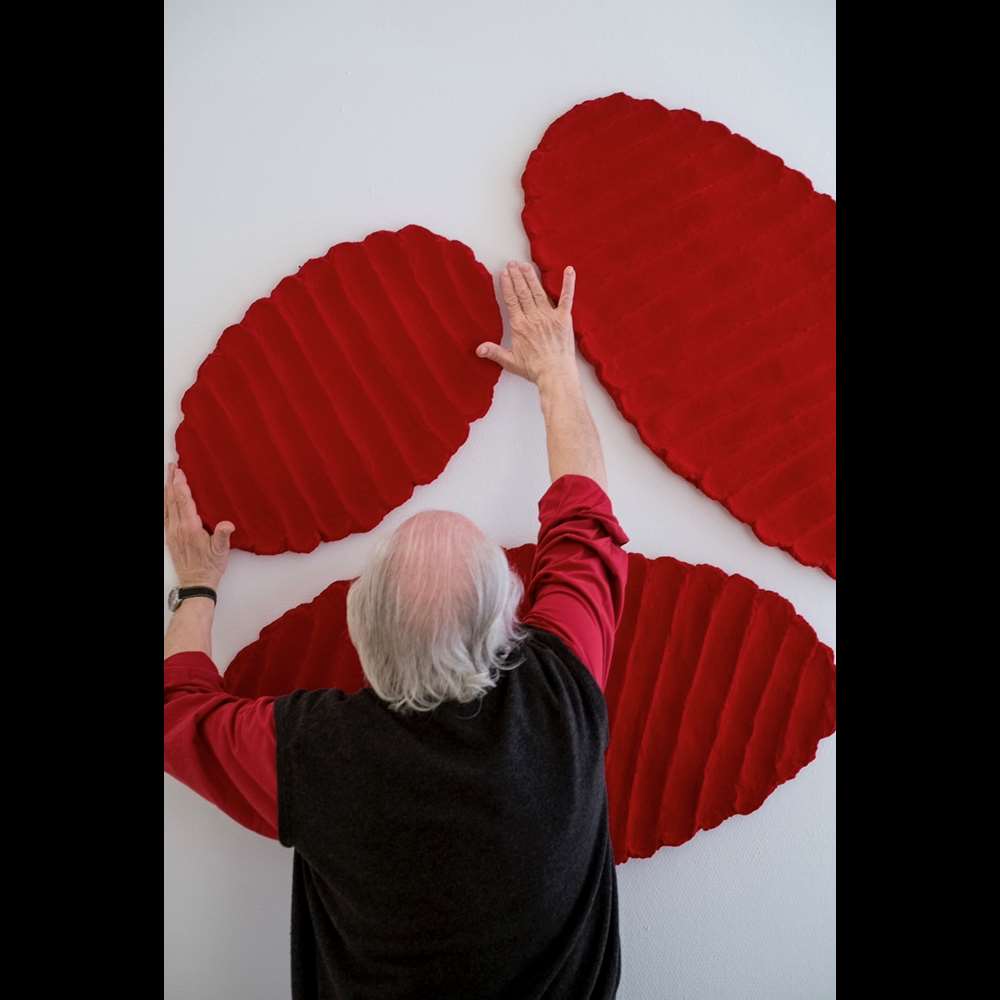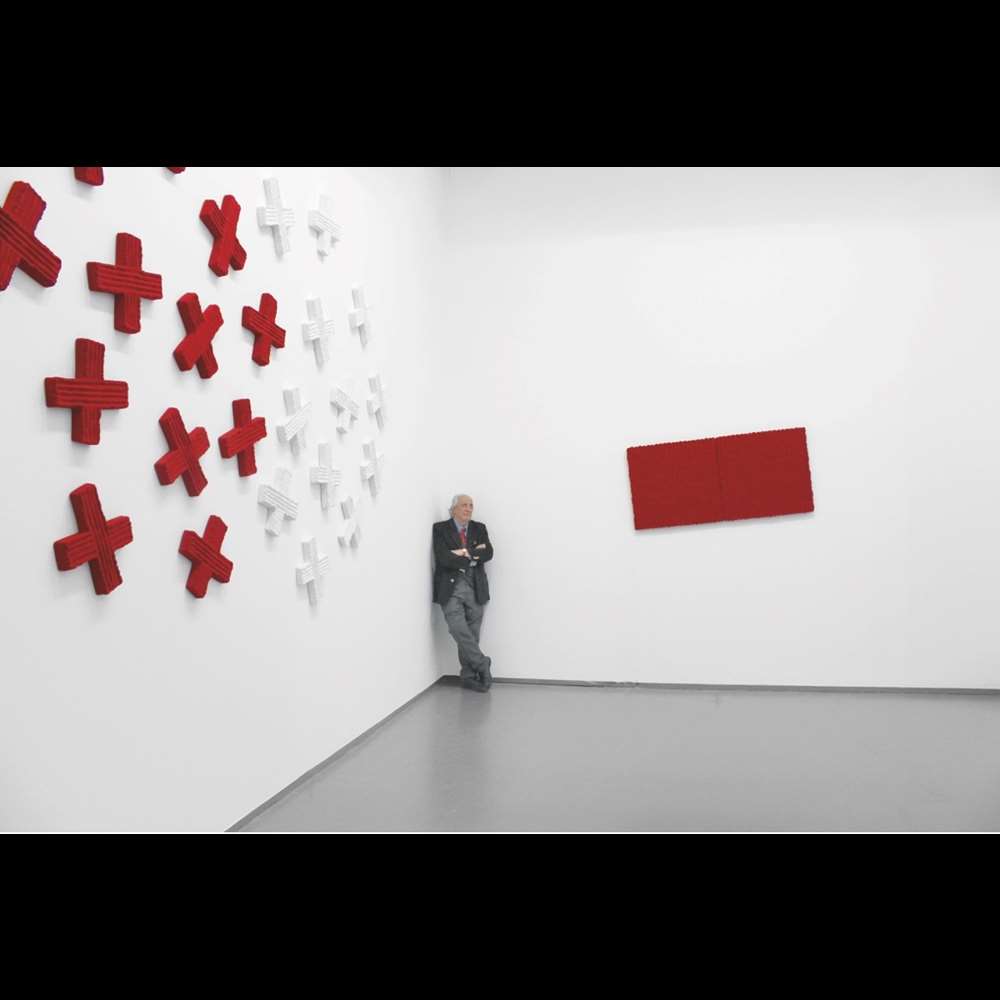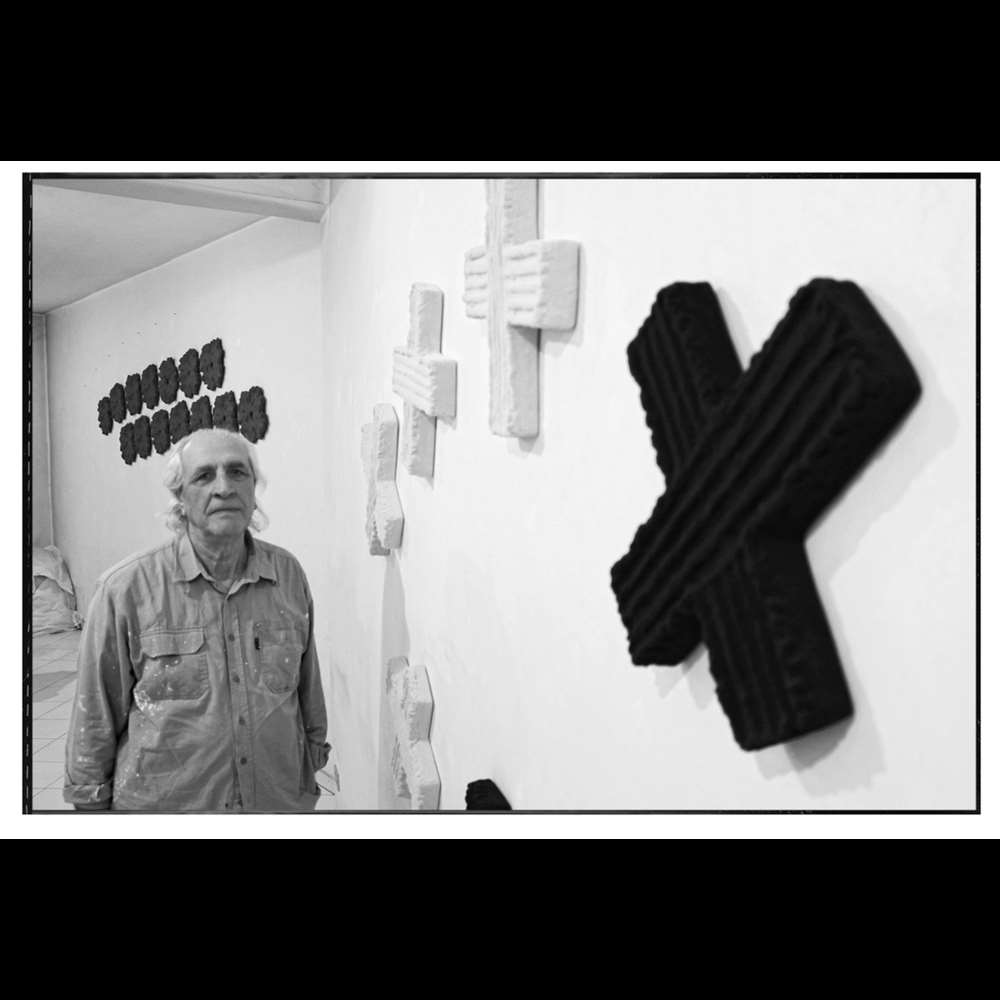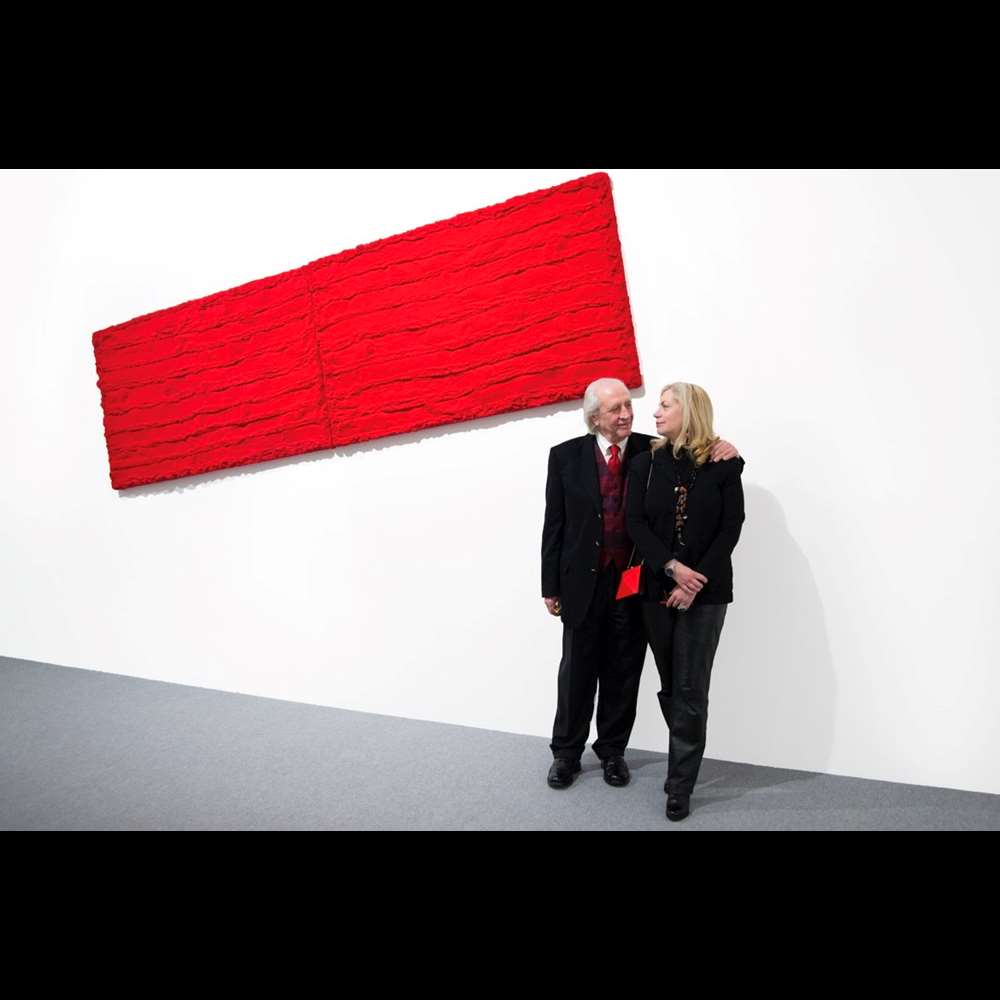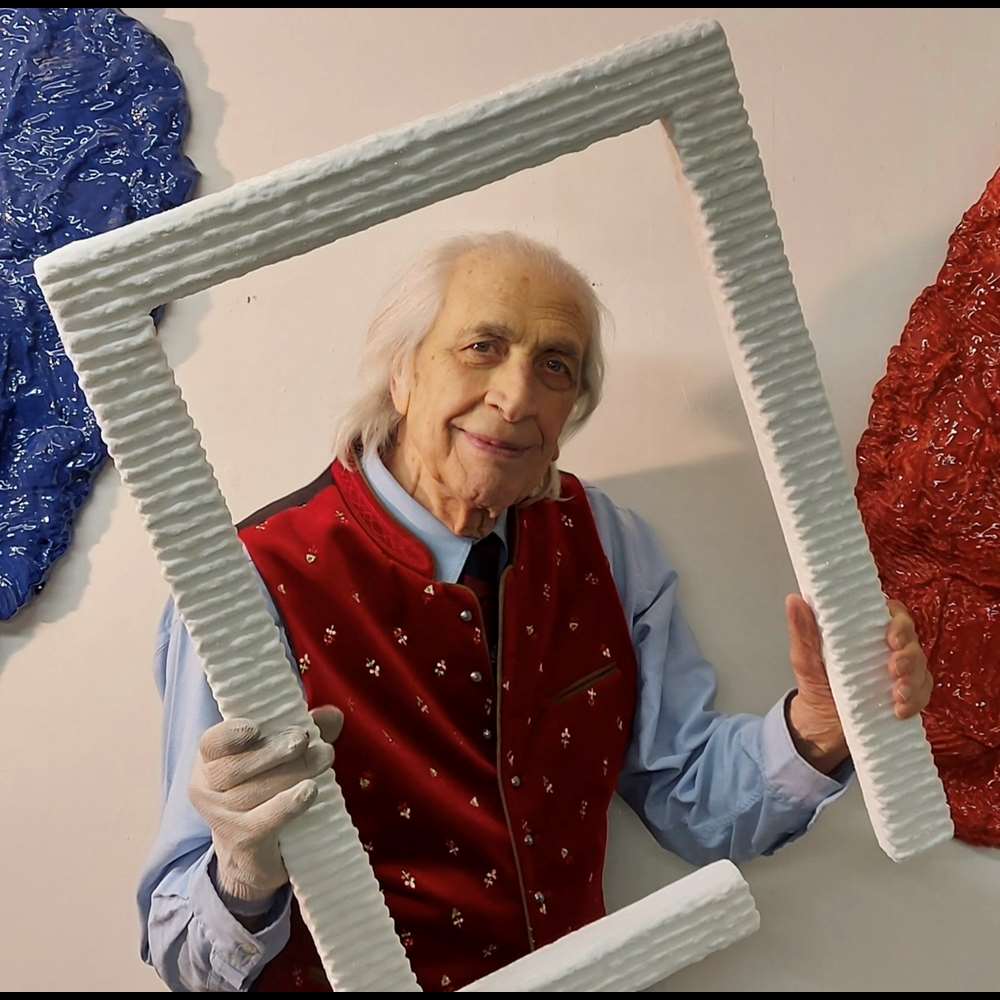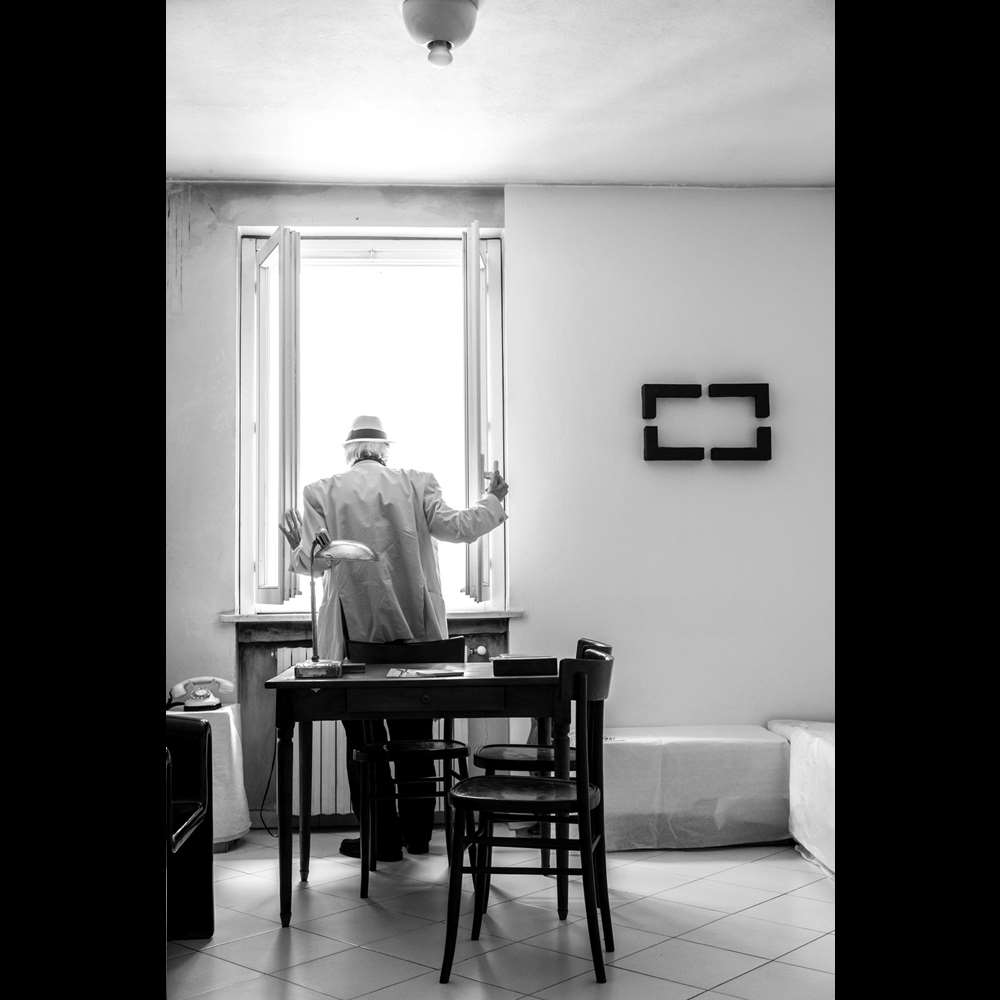1. What are the foundations of your research (Art Identity)?
Point, line and perspective. Art has no limits, the limit of art is art itself and it must never resemble itself. One must not perceive where it comes from, what is the intimate path it has taken but only the intellectual perception behind it. Woe to you if art remembers another work! If it happens it means that the eye has not helped and has led us to do what should never be done in art: imitate another artist. The latter is something that is left to the copyists to do.
2. Who are the artists who have guided you in your research?
The guideline as a student boy was given to me by Dino Caruso who had in turn been a pupil of Enrico Prampolini in Rome. Caruso, of Sicilian origins, had gone to study in Rome and on his return to Sicily he became my professor of plastics. A beautiful emotional and esteem bond was born with him. I was his favorite pupil and this led me to understand myself more and more. But my father was my first supporter, he always said: "My son will go where he has to go".
3. Define yourself as a human being using three adjectives.
There is no truer answer than that given by Pope Benedict XVI which I revisit in an artistic sense: "I am aware of being a humble servant of the vine of art".
4. According to your vision, where is he going and where would you like him to go, contemporary art?
Contemporary art is drifting a bit. The fault, albeit involuntary of the art system, is that of having widened the boundaries so much that all those who are preparing to think about art think they can practice this work. Being an artist is a condition that must belong to a story, to a past full of senses that lead the individual to the very need to be a creator. A deep need to get to the spirit. I believe that art has now opened up too much, also due to a natural question of numbers: the students of the academies, those of the art schools and all the various aspiring artists. We are filled with people eager to do this terribly difficult and at times frustrating job. It's not a job for everyone. We almost never find out if it's really made for us or not, we discover it perhaps one day through the recognition of the history of art and at that point we are ready for the "big flight"! One of the worst things in this world is when an artist is recognized as a great 30-40-100 years after his death or when, in order to achieve fame, he decides to subject himself to the laws imposed by the market or by critics, depriving himself of his own language for pure interest. I hope a kind of “consciousness” returns where Marcel Duchamp is recognized. Let me explain… in a certain sense he was guilty of this involuntary sin of defining a simple urinal as a “work”! His pace was fundamental but unfortunately many people felt compelled to appropriate and redo his own artistic operation 60 years later. The worst is that part of the public does not notice these jokes or even worse, has an interest in supporting them.
Pino Pinelli was born in Catania in 1938, where he studied art. In 1963 he moved to Milan, where he still lives and works, fascinated and attracted by the artistic debate at the time, a debate enlivened by figures such as Lucio Fontana, Piero Manzoni, and Enrico Castellani. In 1968, he held his first solo show in Galleria Bergamini. In the early 1970s he began a period of reflection and research in which he tried to put into focus the unavoidable connection between tradition and innovation; he paid particular attention to the painted surface and the vibrations of painting.
From these reflections were born the series “Topologie” and “Monocromi”, the surfaces of which began to vibrate with a subtle agitation, almost as though the artist wanted to convey the very breath of painting. As a result of these works, Filiberto Menna placed him in the category of what defined “Analytical Painting”; this was despite the fact that, in 1976, Pinelli had already drastically reduced the size of his works, and had then located them in a defined space, one next to the other, almost as though an explosion had hit his large canvases and had disseminated their fragments.
This shattering of the concept of pictures into fragments was the “desperate” act of a European painter who was aware of the weight of history; he felt crushed by the unavoidable enormity of what had happened before: so the only possible act was to “think” painting rather than “make” it.
In his work, the rectangular area of the wall becomes a protagonist, because it loses its neutrality to turn into an integral part of the work; furthermore, the works consisting of groups of painterly elements migrate and follow a pre-established and slightly curved path, almost as though imitating the gestures of a sower of seeds: the disseminator.
If we ignore the label of “Analytical Painting”, Pinelli’s works can be better described as uneasy bodies of painting walking through space, wavering and migrating in small or large formations: bodies made of materials that have the marks of anxious ductility impressed on them, and that exalt the tactile physicality and visual pleasure of a colour pulsating with luminous vibrations.
Pinelli has held numerous shows in national and international museums and institutions, among which: the Venice Biennale (1986/1997), the Rome Quadriennale (1986/2006) and the Nuova Delhi Triennale of Art Lalit Kala Akademi.
In 2016, his hometown Catania dedicated him an important anthological exhibition where he also holds a lectio magistralis and rewarded him with an honorary degree for the uniqueness, originality and consistency of his work in Italy and abroad. Also in 2016 he held a solo show at the Multimedia Art Museum in Moscow and the Italian director Calopresti made a docufilm, The light of Pino Pinelli, which was presented at the Taormina Film Festival in 2017.
In 2018, he held a major solo show at Palazzo Reale and Gallerie d’Italia in Milan. He was awarded the title of Academician of the Academy of Fine Arts of Perugia.
In Basel, in 2021 he participated in Art Unlimited, with a monumental dissemination of 100 elements, specially created for the exhibition.
In Tokyo in May 2022 he was invited to represent Italian contemporary art within the “Italia Amore Mio” event, coordinated and organized by the Italian Chamber of Commerce in Tokyo.
His works belong to many permanent collections including: Museo del Novecento, Milan; Mart, Trento and Rovereto; Madre, Naples; Centre Pompidou, Paris; Museum Art.Plus, Donaueschingen; Centro Studi e Archivio della Comunicazione, University of Parma; San Patrignano Collection, Rimini; Pablo Atchugarry Foundation, Uruguay; Margulies Foundation, Miami; Zappettini Foundation, Chiavari; Gallerie d’Italia, Milan; MAGA, Gallarate; MACA Morterone, Morterone; Musei Civici, Lecco; Museion, Bolzano; Università Bocconi, Università degli Studi Bicocca, Milan; Collection CMR, Monaco.

